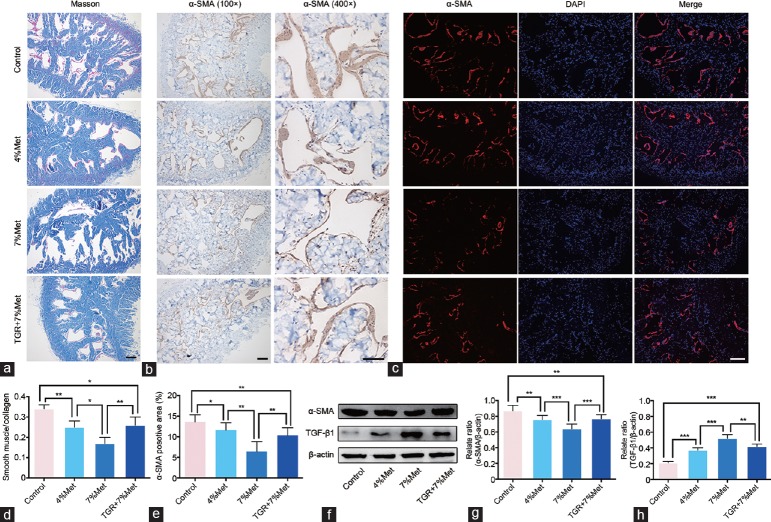Figure 6.
hKLK1 could reduce fibrosis in CC of rats with HHcy. (a) Masson's trichrome staining results of CC of rats in all four groups. (b) Immunohistochemical staining result of α-SMA in CC of rats (×100 and ×400). (c) Immunofluorescence results of α-SMA in CC of rats. (d) Ratios of smooth muscle to collagen were presented through bar graphs. (e) Ratios of α-SMA positive area to cavernous area were presented through bar graphs. (f) Representative western blot results for α-SMA and TGF-β1 in CC of rats. Expressions of α-SMA and TGF-β1 with β-actin as the loading control in all four groups were presented through bar graphs: (d) for α-SMA and (e) for TGF-β1. Data are expressed as mean ± standard deviation (n = 5 per group). *P < 0.05, **P <0.01 and ***P < 0.001. All scale bars = 100 μm. Met: methionine; hKLK1: human tissue kallikrein-1; CC: corpus cavernosum; HHcy: hyperhomocysteinemia; TGR: transgenic rats; α-SMA: α-smooth muscle actin; TGF-β1: transforming growth factor-β1.

